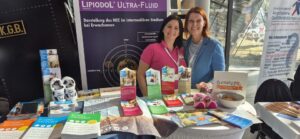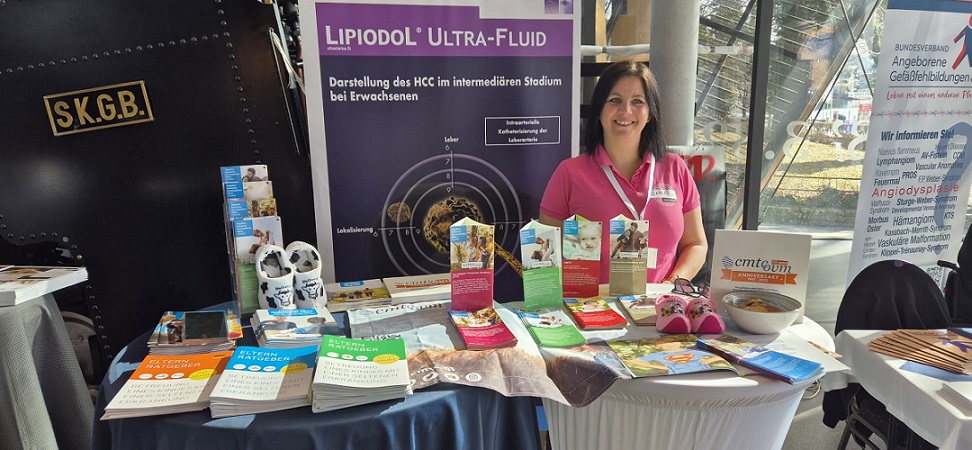From March 7 to 8, 2025, the 15th Annual Conference of the Austrian Working Group for Interdisciplinary Treatment of Vascular Anomalies (AIVA) took place in St. Wolfgang am Wolfgangsee. This year, the event was held jointly with the 6th Annual Conference of DiGGefa (German Interdisciplinary Society for Vascular Anomalies e.V.).
 As the CMTC-OVM patient representative for Austria, we were once again able to attend this conference, and this time we were accompanied by Hannah Krumpen, who represented Germany.
As the CMTC-OVM patient representative for Austria, we were once again able to attend this conference, and this time we were accompanied by Hannah Krumpen, who represented Germany.
This meeting, held in the impressive Schafbergbahn building in St. Wolfgang, provided a valuable opportunity for numerous physicians from various fields—such as laser therapy, radiology, surgery, otorhinolaryngology, human genetics, and orthopedics—to connect and exchange knowledge. The topic of rare vascular anomalies was discussed extensively across borders, aiming to further expand the international interdisciplinary network.
As every year, the AIVA conference was entirely dedicated to vascular anomalies, which are malformations of blood or lymphatic vessels.
These malformations can manifest in the following ways:
- Arteriovenous – Blood flows at a higher speed from the arteries to the veins.
- Venous – In affected areas, the patient has no functioning venous valves. This can lead to blood pooling due to impaired blood flow.
- Capillary – The capillary vessels (the smallest blood vessels) are abnormally dilated, resulting in a persistent redness of the skin.
- Lymphatic – A benign vascular malformation in which the lymphatic vessels cannot properly transport fluid from the tissue.

In 2018, the ISSVA classification (International Society for the Study of Vascular Anomalies) was developed in Amsterdam. This classification is continuously updated and refined. Vascular malformations are already visible at birth and grow proportionally with the child. More information can be found at https://www.issva.org/classification.
Currently, about 50 genes are known to be involved in vascular anomalies. However, the genetic changes are often present only in the mosaicism of the visible “spots.” It is important to mention that somatic mosaic mutations are never inherited from a parent. The mutation occurs randomly during early embryonic development.
Finding these genetic mutations is incredibly challenging. The issue is that it is still unclear in which cells the mutation is located. To provide genetic proof, it is crucial that during a biopsy, as much as possible of the affected area (the lesion) is collected, while containing as little normal surrounding tissue as possible.
To obtain a higher mosaic concentration, a high sequencing depth is especially crucial. This means that the tissue sample must be taken from the deeper layers of the skin!
For us, this was once again a fantastic opportunity to raise more awareness about CMTC-OVM in Austria and Germany. The participants showed great interest, and we were able to distribute a significant amount of informational materials.
Additionally, the famous Dutch stroopwafels we brought along were gratefully received by the participants!
We had valuable exchanges with other self-help groups and are once again very grateful for this conference!
